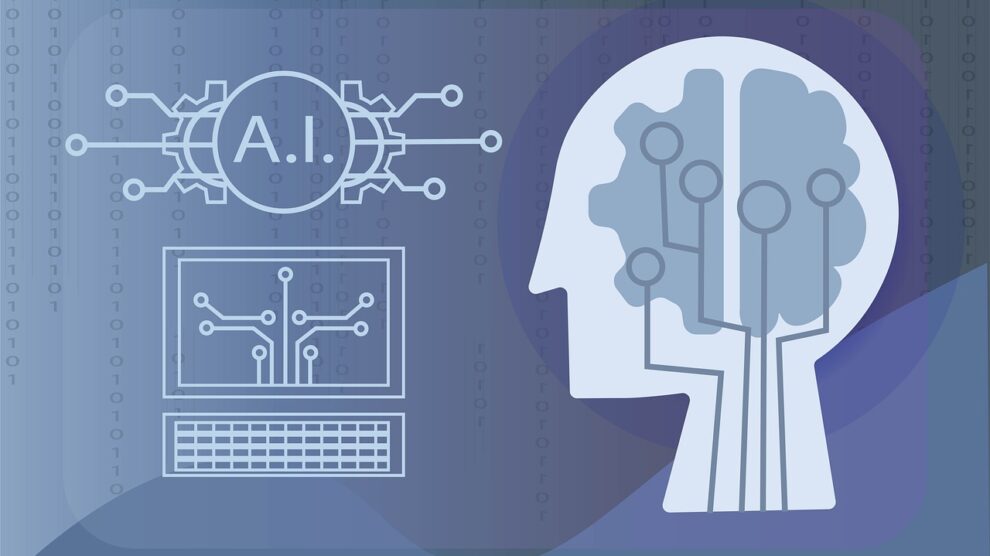Although artificial intelligence technology has existed for decades in one form or another, recent years have seen an increase in its availability and popularity. While AI was once reserved for technologically advanced users, virtually anyone in the world with a computer or mobile phone now has access to powerful AI tools.
However, will this AI boom continue well into the future?
Why AI has recently become a more novel technology
Much of the reason for the increased interest in artificial intelligence is its tremendous benefits for individuals and organizations. Some of the reasons why AI has become so popular include its efficiency, user-friendliness, and the potential for customization.
Efficiency
The main reason why artificial intelligence has become such a popular technology is its incredible efficiency when used as a tool to support human workers. AI models can automate monotonous tasks, freeing human workers to complete the aspects of their jobs that legitimately require their attention. AI can also be used to conduct advanced data analysis much more quickly and efficiently than human workers could.
User-friendliness
Artificial intelligence tends to be much more user-friendly than other software. With most of today’s more prominent AI platforms, users need only learn how to create prompts that elicit the desired response. Its capacity for automation allows it to complete certain complex tasks far more quickly and efficiently than ever.
Customization potential
AI platforms can also be customized to the unique needs of individuals and organizations, meaning users can adjust prompts to receive results that are more in line with the needs of their organization. AI models can also be trained using data to ensure that future output is more in line with what is desired.
Is artificial intelligence here to stay?
However, despite these tremendous benefits, one has to wonder if artificial intelligence has longevity and staying power or if it is just a passing fad. Gartner predicts that 30 percent of generative AI projects will be abandoned after the proof of concept stage by the end of 2025, citing reasons like “poor data quality, inadequate risk controls, escalating costs, or unclear business value.” However, since AI is still an incredibly novel innovation, it is understandable that there would be so much uncertainty regarding its use.
Although 30 percent might seem like a big number, this depends on your perspective. Remember, 30 percent failure means 70 percent success — a statistic that is mostly in line with the success rates of the adoption of other novel technologies. Especially considering that Gartner expected 85 percent of AI projects to deliver “erroneous outcomes” in 2018, a 70 percent success rate is far from the worst situation the artificial intelligence industry could be experiencing.
Some have suggested that the artificial intelligence industry could be experiencing an “AI bubble,” similar to the “dot com bubble” that happened with the advent of the Internet. Reports show that “.ai” domain names grew by 84.73 percent in the last six months of 2023 alone. This behavior indicates a potential bubble — an economic boom driven by speculative value rather than intrinsic worth.
How to avoid a collapse of the AI industry
Still, it seems unlikely that this bubble will burst anytime soon, especially if the artificial intelligence industry takes certain steps to ensure this failure does not occur. To avoid a bubble bursting, there needs to be genuine, legitimate growth. As more people and businesses use AI technology as part of their daily operations, speculative value must be replaced by legitimate value, and we are already starting to see this in the age of AI.
At this point, many organizations are beginning to look at artificial intelligence technology in terms of years rather than months. As a result, AI providers must change their perspective on their products and business models to take advantage of this trend and reflect these plans. Vendors must emphasize the longevity of revenue through long-term, recurring income, such as monthly or annual subscription fees. AI providers must also ensure that their products are constantly evolving and staying up to date to keep up with competitors and industry demand.
One trend that will allow artificial intelligence technology to continue its proliferation is an increased prevalence of personalized AI solutions. Today, almost every leading organization is developing specialized AI models to give them a competitive advantage, using generalized AI platforms as their foundational building blocks.
For example, custom GPT chatbots are being created based on OpenAI’s ChatGPT model using organizations’ individual databases, providing them with more personalized solutions. Because of this, the base model remains relevant, as it is the underlying technology of these custom solutions.
Although the rapid increase in interest in artificial intelligence may seem like a sign that we are amidst an “AI bubble” ready to burst, the benefits of AI provide the type of legitimate value that will prevent this type of crash from occurring. With the proliferation of custom artificial intelligence solutions and business models that emphasize longevity and recurring income, artificial intelligence seems poised to be an important innovation for years to come.





